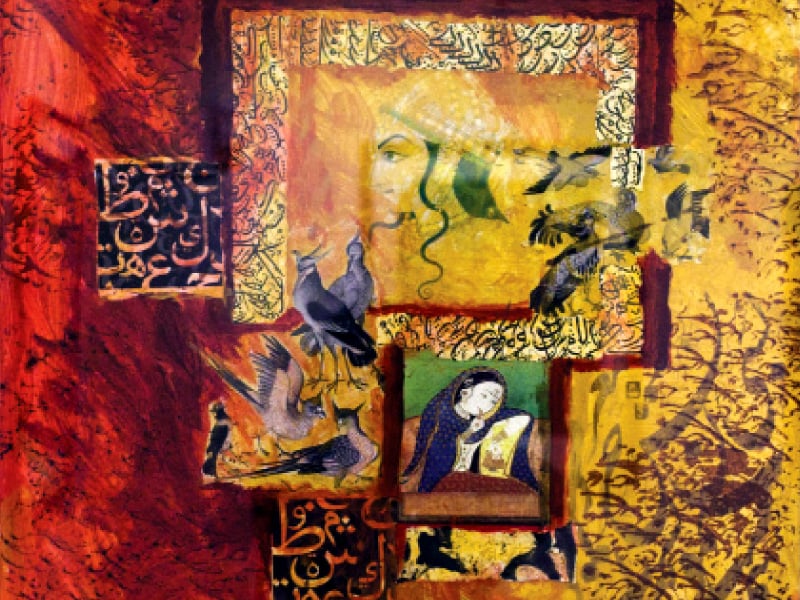
ISLAMABAD:
Lingering nostalgia for a more vibrant era manifests itself in Samina Ali Akhtar’s paintings. Titled “Echoes of Silence”, the exhibition went on display at the Nomad Art Gallery on Wednesday.
The collection of Islamic art unveils the artist’s deep association with the Indian subcontinent’s history, illustrated through the usage of a rich Eastern palette and grandiose textures.
“Every painting has a story, and all stories are there to be understood,” said Akhtar, who has an academic background in miniature art.
Breaking away from the monotony of landscape or portrait, she not only weaves picturesque narratives, but also linkages between the historical and modern times.
“I always wanted a flowing, fast way of expression --- simultaneously, I found communication between the past and the present necessary,” she added.
Akhtar recalls being mesmerised by specimens of old paintings and Mughal buildings in a three-month course on restoring the Lahore Fort back in the 80’s.
“The resonance was haunting, I could really hear the sound of ghungroos (anklet with bells), the clamour of horse hooves, the elephants crossing the wooden bridges and the ladies in their darbars,” she said. “This is a revival of Islamic art of sorts, of retelling silent stories which are now hidden in books no one reads due to the onset of the computer age.”
While the current series is a continuation of the artist’s signature style of painting Eastern subjects in modern compositions, four of the recent pieces pay homage to a long-lost tradition.
“It was at a museum that I came across specimens of a game called Parcheesi, which women used to play in times past. It is like a cross between modern-day board games such as chess and Ludo. Noor Jehan was a patron of the game,” said Akhtar, explaining the inspiration behind paintings which unravel like fancy puzzles.
Impressions of the withered walls and crumbling structures of Mughal buildings are incorporated into the multilayered surfaces of the paintings, speaking of the neglect that art is faced with.
“My heart bleeds at the sight,” said Akhtar, who has been visiting the fort on exploration studies and with friends, only to find that the site is devoid of any real restoration. “Rather than restoring, they are reconstructing or rebuilding, which will not curb the decay,” she added.
Now, however, poor substitutes such as distemper instead of lime water are being used, posing a threat to the old structures. She feels that India has progressed far beyond us in such upkeep, and although the National College of the Arts and the Punjab University Department of Art and Design have taken up “great” initiatives, more work needs to be done to this end.
“The only way to remain associated with our heritage, with our claim to the actual art of Pakistan which is now gone or is locked inside books, is to bring them up on paper and canvas, making it visible to the common man,” added Akhtar.
Commenting on the collection, the gallery curator Nageen Hyat said the series affirm Akhtar’s contribution to the legacy of Islamic art while retaining in its essence a symbol of modernity and rich aesthetics. “The narratives are familiar, and the collection depicts an abstract juxtaposition of patterns and storytelling, which is symbolic,” added Hyat.
Published in The Express Tribune, April 3rd, 2014.






















































COMMENTS
Comments are moderated and generally will be posted if they are on-topic and not abusive.
For more information, please see our Comments FAQ